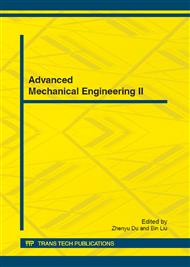p.180
p.185
p.190
p.196
p.201
p.207
p.211
p.217
p.222
Hydraulic Sytem for Wave Compensation of Deep-Water Exploration Ship
Abstract:
In order to reduce the influence of the bench extraction equipment from the working deep-water exploration ship when it has swing or heave movement by wind and waves, according to the work condition and the structural parameters of 3000m deep-water exploration ship, Pump-controlled type and valve-controlled type hydraulic transmission system for waves compensation of deep-water exploration ship bench extraction equipment was researched through analysing and calculating. Wire rope which drags the bench is maintained appropriate tensioning status using this wave compensation system, when bench downs to the bottom of the sea. This system can bind and release wire rope to compensate for heave motion automatically, in order to keep the stability and security of the deep-water exploration ship before bench loading the bottom. Dynamic performance of wave compensation system is improved through controlling supplementation pressure and the accumulator parameters precisely.
Info:
Periodical:
Pages:
201-206
Citation:
Online since:
July 2012
Authors:
Price:
Сopyright:
© 2012 Trans Tech Publications Ltd. All Rights Reserved
Share:
Citation:


